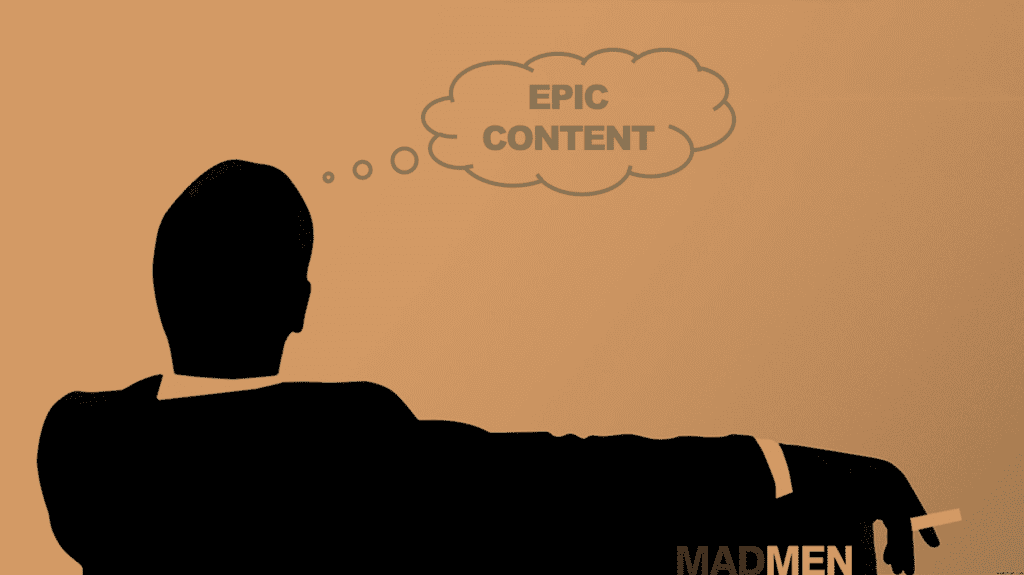How to Remain Human with Technology

Programmatic Ad Buying. Native Advertising. Content Marketing. Human Storytelling.
These are some of the top buzzwords used by brand marketers in the past 12 – 18 months. I am not a huge fan of robots buying banner ad inventory that is never seen by anyone. But this technology is real. And digital advertising is still growing.
So how does a brand get their message out, stay human, help their customers and drive business in today’s complicated marketing technology landscape?
And as we all know, John Oliver gave a very funny and blistering rant on native ads a few months back on his HBO program, “This Week Tonight.” He equated the lowering of editorial’s long-held barrier with advertising departments to a surgeon ripping a patient’s heart out and thinking it doesn’t matter — that readers’ trust in their news source is, in fact, all that matters. I can only imagine what he’d think if he knew that native advertising is now being discussed as moving toward a programmatic model.
I believe that native ads and content marketing will never be bought 100% programmatically — there are too many nuances to ensuring that content and the publication align. Humans will always play a role.
When it comes to native ads, I see the primary challenge coming from aligning branded content with a specific publication, and feeding back data to brands that allow them to adjust what they create over time.
How will programmatic buying evolve to better serve native ads and other non-traditional content, and what should marketers look for when looking to make investments in native ads more efficiently? Here are three strategies:
3 Ways Brands Can Remain Human With The Latest Technology
1. A semi-automated approach is effective for meeting readers where they are. For example, Outbrain is creating totally new content-based modules that will replace the traditional banner ad. They’re based on a CPC model and, in addition to targeting via demographics, they’re leading the charge to leverage data for automated and semi-automated content discovery.
In other words, they help buyers both place content and understand where it might get the most traction or response, since that has implications for what they license and create on the front end.
Lesson: Brands should track results and test often to be sure content placement and context feels authentic.
2. The future of targeting is spontaneous, custom ad creation. OneSpot is literally trying to replace the banner with content vs. ads by basically overriding display inventory with content-driven creative. Brands still buy inventory through the exchange on a CPM basis, but they have a cool “engine” that takes content and embedded images and creates a new kind of banner unit on the fly.
Steve Sachs, CEO of OneSpot, blogged “Content marketing may not look or feel like digital advertising, but its backend needs to work more like today’s existing programmatic ad technology stack for brands to really succeed in a digital environment.” His point is that creating content at scale is no longer the challenge (debatable, in my opinion, for high-quality content), and that the hurdle is real-time audience targeting from customer data.
Lesson: When using this type of technology, it is in the best interest of your brand to not rely on the engine until it proves entirely effective to your goals as well as seamless and on-brand for your readers.
3. Transparency and creativity are the only way this model with thrive. We see other approaches through Nativo and Sharethrough, which are leading the pack with true native ad units vs. recommendation widgets. We also are seeing native ad platforms like Syndicate beginning to bring transparency to native ad pricing, which may very well be the first step required as this market matures.
And most recently we saw Taboola, another content recommendation company, acquire Perfect Market, with the goal of marrying their programmatic ad platform and content recommendations to better publishers’ bottom lines. In an ancillary space to watch, Rocketfuel also acquired [X+1] bringing together its programmatic ad network and [X+1]’s dual demand-side platform (DSP) and data management platform (DMP) solution.
Lesson: Your users should never feel tricked or deceived when clicking on your content. The point of programmatic is to serve up relevant content in an efficient, timely manner to reach your audience when your content is what they’re looking for.
It’s Still About The Content!!!
Ultimately, I believe that audiences will feel deceived no matter what if they are led to a really bad piece of  content — programmatically or otherwise. Our industry needs to create standards and ethics to ensure that the integrity of the publisher and the brand are upheld while also delivering value to the reader.
content — programmatically or otherwise. Our industry needs to create standards and ethics to ensure that the integrity of the publisher and the brand are upheld while also delivering value to the reader.
To do this, the content “inventory” needs to be reviewed thoroughly to ensure that the right content is aligned to the right publisher — and that quality always wins.
We’ve seen in our own native ad buys that the most success comes from deeply collaborating with the publisher to make it a truly native — and also valuable — experience for the readers.
For now, placing native ads into a programmatic strategy is something that brands can do — but they are wisely being careful about its application so far, since getting it right is ultimately about providing content that audiences actually want.
Native isn’t just about placement. It’s about the content being just as indigenous as the readers who dwell there. Brands must work with publishers to meet that mutually-beneficial goal or risk being the butt of even more jokes.
This article was previously titled How Brands Can Remain Human When Native and Ad Technology Collide and posted on LinkedIn and is republished here with permission. Prior to that it appeared on AdAge and was re-purposed on B2B Marketing Insider.
—–
 Michael Brenner is the Head of Strategy for the leading content marketing platform, NewsCred. He is also the author of B2B Marketing Insider, a contributor to Forbes and a frequent speaker at industry events covering topics such as marketing strategy, social business, content marketing, digital marketing, social media and personal branding. Follow Michael on Twitter (@BrennerMichael), LinkedIn, Facebook and Google+ and Subscribe to B2B Marketing Insider by Email
Michael Brenner is the Head of Strategy for the leading content marketing platform, NewsCred. He is also the author of B2B Marketing Insider, a contributor to Forbes and a frequent speaker at industry events covering topics such as marketing strategy, social business, content marketing, digital marketing, social media and personal branding. Follow Michael on Twitter (@BrennerMichael), LinkedIn, Facebook and Google+ and Subscribe to B2B Marketing Insider by Email
Images: Copyright: ‘http://www.123rf.com/profile_gavrilichev‘ / 123RF Stock Photo
http://thefinancialbrand.com/47289/why-content-marketing-falls-short/
Jan Gordon
Latest posts by Jan Gordon (see all)
- Curatti Best Articles of 2022 (And Happy New Year 2023!) - December 28, 2022
- Curatti Best Articles of 2021 (And Happy New Year 2022!) - December 31, 2021
- Curatti Best Articles of 2020 (And Happy New Year 2021!) - December 31, 2020


